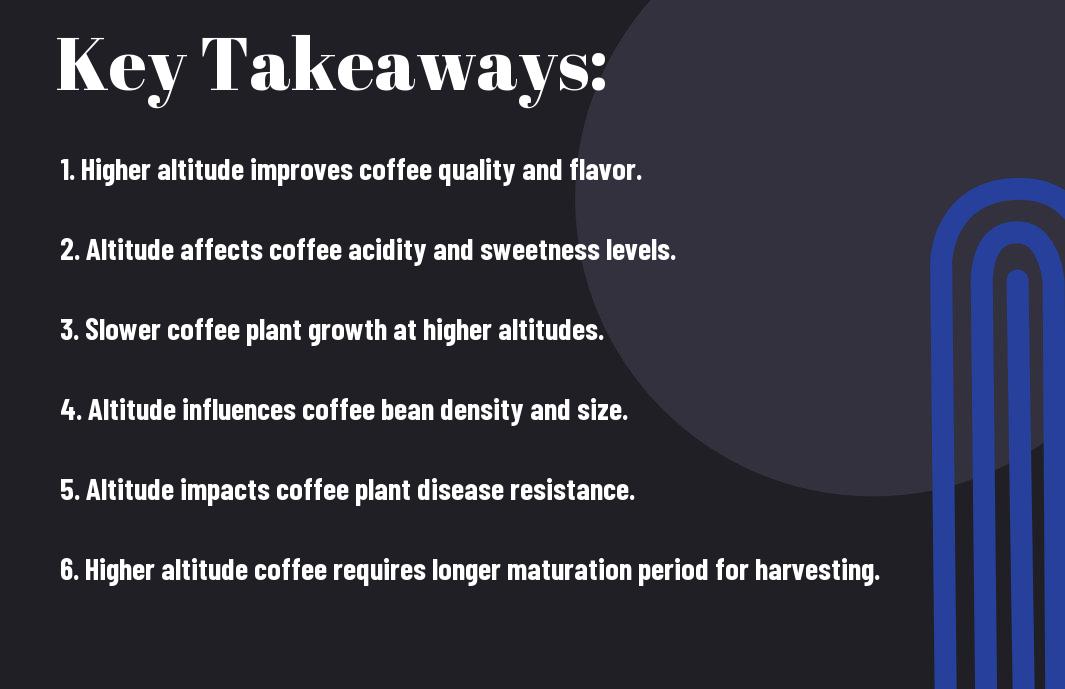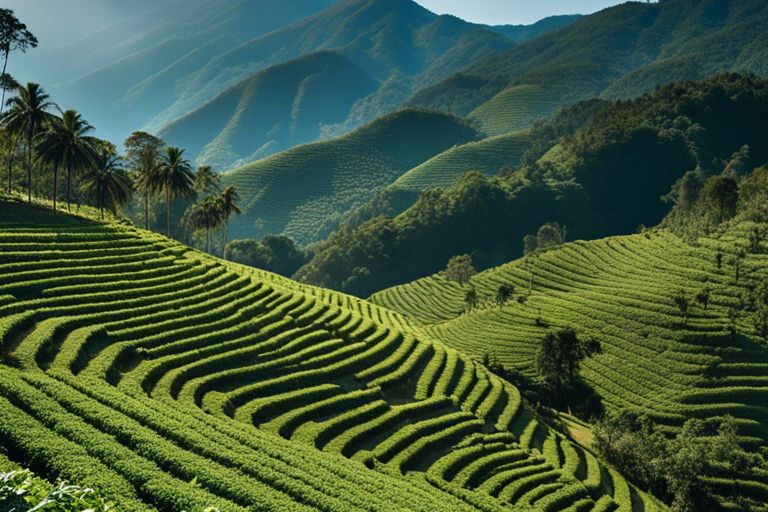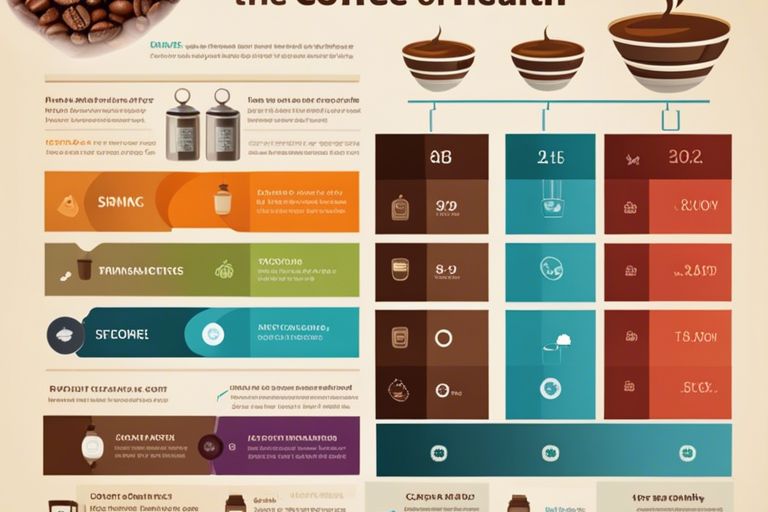It’s time to unravel the mystery of the beloved French press, a simple yet elegant device for brewing coffee. So, what exactly is a French press, and how does one use this timeless piece in their morning routine? Let’s investigate the art of French press coffee making and discover the joys of the perfect brew.
Key Takeaways:
- French press: A French press is a coffee brewing device that allows for a rich and flavorful coffee experience.
- How it works: Coarsely ground coffee is steeped in hot water in the French press before being pressed down with a plunger, separating the grounds from the coffee.
- Steps to use: Add coffee grounds, pour hot water, stir, steep, press down the plunger slowly, and enjoy your freshly brewed coffee.
- Control over strength: Using a French press gives you control over the strength and flavor of your coffee by adjusting factors like steeping time and coffee-to-water ratio.
- Easy to clean: French presses are easy to clean with their removable parts, making it a convenient option for coffee lovers.

The Origins of French Press
History of French Press
An vital tool for coffee lovers, the French press has a rich history dating back to the late 19th century. An Italian designer, Attilio Calimani, patented the first known French press coffee maker in 1929. However, it was the French couple, Mayer and Delforge, who further developed and popularized the design in the 1950s, leading to the widespread use of the French press we know today.
Evolution of Brewing Methods
French press brewing method has evolved over the years, offering coffee enthusiasts a simple yet effective way to craft a rich and flavorful cup of coffee. For instance, today, you can find French presses made from various materials such as glass, stainless steel, and even ceramic to cater to different preferences and styles. This versatile brewing method continues to captivate coffee lovers worldwide with its ability to extract the true essence of coffee beans.

What is a French Press?
Some French press is a simple yet effective coffee brewing device that has been a favorite among coffee enthusiasts for decades. Also known as a press pot or plunger pot, the French press offers a hands-on approach to making coffee, allowing the user to control the brewing process for a more customized cup of coffee.
Definition and Design
The French press consists of a cylindrical glass or stainless steel container with a plunger and metal filter assembly. Its design allows for coffee grounds to steep in hot water before being plunged down to separate them from the brewed coffee.
Key Components and Materials
The key components of a French press include the plunger, which has a metal or nylon mesh filter attached to it, and a handle for easy pouring. French presses are typically made of glass or stainless steel, with some models featuring insulated double-walled construction to keep the coffee hot for a longer period.
With a French press, the materials used are important as they directly impact the brewing process and the quality of the coffee. Glass containers are ideal for showcasing the brewing process, while stainless steel is more durable and retains heat better, making it suitable for travel or outdoor use.
How to Use a French Press
Not sure how to use a French press? Don’t worry, it’s easier than you think! Brewing coffee with a French press is a simple and rewarding process that allows you to enjoy a rich and flavorful cup of coffee.
Step-by-Step Brewing Guide
| Step 1 | Boil water and let it cool slightly. |
| Step 2 | Measure and coarsely grind coffee beans. |
| Step 3 | Add coffee grounds to the French press. |
| Step 4 | Pour hot water over the grounds and stir gently. |
| Step 5 | Let the coffee steep for about 4 minutes. |
| Step 6 | Press down the plunger slowly. |
| Step 7 | Pour and enjoy your freshly brewed coffee! |
Tips for Optimal Extraction
- Use freshly ground coffee beans for the best flavor.
- Experiment with the coffee-to-water ratio to find your perfect strength.
Guide your French press experience with these optimal extraction tips. Any coffee enthusiast knows that the key to a great cup lies in the details.
Common Mistakes to Avoid
Avoid these common mistakes when using a French press to ensure a delicious brew every time.
This section will cover common mistakes like using water that is too hot or not pressing the plunger correctly. By being mindful of these errors, you can elevate your coffee game and savor the true flavors of your beans.
This guide will help you become a French press pro in no time. Keep in mind, practice makes perfect, and soon you’ll be brewing the perfect cup of coffee every morning.

Benefits of French Press Coffee
Rich Flavor Profile
An imperative benefit of French press coffee is its rich flavor profile. The method of immersion brewing allows the coffee grounds to steep fully in hot water, extracting a robust taste and aroma that may be more pronounced compared to other brewing methods.
Higher Caffeine Content
To coffee enthusiasts seeking that extra kick, the French press offers a higher caffeine content due to a longer steeping time. This prolonged contact between the coffee grounds and water results in a bolder and more potent brew.
For instance, if you enjoy a morning coffee that really wakes you up, the French press can deliver a more intense caffeine boost compared to drip coffee makers or espresso machines.
Cost-Effective and Environmentally Friendly
Coffee aficionados who appreciate sustainability will find the French press to be a cost-effective and environmentally friendly option. This brewing method requires no disposable filters, pods, or capsules, reducing waste and overall environmental impact.
Profile

French Press vs. Other Brewing Methods
After mastering the art of French press brewing, you might wonder how it compares to other popular coffee brewing methods. Let’s explore the differences and similarities between French press and drip brewers, espresso machines, and pour-over methods.
Drip Brewer Comparison
An necessary comparison to the French press is the drip brewer. The table below outlines the key differences between these two methods:
| French Press | Drip Brewer |
| Immersion brewing | Drip brewing |
| Full-bodied coffee | Clear, clean taste |
| Control over brew time | Consistent results |
Espresso Machine Comparison
Espresso machines offer a more intense and concentrated coffee experience compared to French press brewing. Below is a detailed comparison between the two methods:
| French Press | Espresso Machine |
| Rich and full-bodied coffee | Intense and concentrated espresso |
| Low pressure brewing | High pressure brewing |
| Easy to use and clean | Requires skill and practice |
Espresso machines are excellent for making quick and robust coffee shots, ideal for those who enjoy a strong coffee experience with a thick crema on top.
Pour-Over Comparison
Another popular manual brewing method is pour-over, which offers a cleaner and lighter coffee compared to French press. Let’s compare the two methods in the table below:
| French Press | Pour-Over |
| Full-bodied coffee | Lighter and cleaner coffee |
| Longer brew time | Shorter brew time |
| No filter needed | Requires paper filter |
On one hand, French press brewing emphasizes the coffee’s natural oils and robust flavors, while pour-over methods highlight the coffee’s nuanced and delicate notes.
French Press Maintenance and Care
Many French press enthusiasts know that proper maintenance and care are important for ensuring a long lifespan and optimal performance of this beloved coffee brewing device. From routine cleaning to storage guidelines, here are some tips to keep your French press in top shape.
Cleaning and Descaling
The key to a great-tasting brew and a well-functioning French press lies in regular cleaning and descaling. The plunger, filter, and glass carafe should be disassembled and washed after each use with warm, soapy water. Pay close attention to any residual coffee grounds or oils that can affect the flavor of future brews.
Descaling should be done periodically to remove mineral deposits that can build up and impact the taste of your coffee. A mixture of equal parts water and white vinegar can be used to soak the components for about 15-20 minutes before rinsing thoroughly.
Storage and Handling
Cleaning your French press thoroughly before storage is crucial to prevent any stale coffee residues from affecting future brews. After cleaning, ensure all parts are completely dry before reassembling or storing to avoid any mold or mildew growth.
With proper storage in a dry and cool place, your French press will be ready to brew delicious coffee for years to come. Avoid leaving it in direct sunlight or near a heat source to maintain the integrity of the materials.
Conclusion
As a reminder, a French press is a simple and classic way to make rich and flavorful coffee at home. By using coarsely ground coffee, hot water, and steeping for a few minutes before pressing down the plunger, you can enjoy a delicious cup of coffee without the need for filters or electricity. It’s a versatile and easy-to-use method that can elevate your morning routine or impress guests with its elegant presentation.
So next time you’re looking to switch up your coffee routine, consider trying out a French press. With a little practice and experimentation, you’ll be able to customize your coffee to your liking and enjoy the full-bodied flavors that this brewing method has to offer. Embrace the simplicity and elegance of the French press and elevate your coffee experience today!
FAQ
Q: What is a French press?
A: A French press, also known as a press pot or plunger pot, is a simple yet elegant device used to brew coffee. It consists of a cylindrical glass or stainless steel container with a plunger and metal mesh filter.
Q: How is a French press used to make coffee?
A: To use a French press, coarse coffee grounds are added to the container, hot water is poured over the grounds, and then the mixture is left to steep for a few minutes. After steeping, the plunger is pressed down slowly to separate the grounds from the brewed coffee.
Q: What are the advantages of using a French press for coffee brewing?
A: Using a French press allows for a full extraction of flavors from the coffee grounds, resulting in a rich and aromatic cup of coffee. It also gives you control over the brewing process, allowing you to customize the strength and flavor of your coffee to suit your preferences.
What are the origins of coffee











































